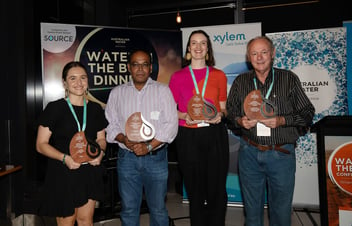NT seagrass habitats more diverse than expected, new research finds

New research surveying ecosystems across Marra and Yanyuwa sea country has revealed that vital seagrass habitat is more widespread and diverse than previously thought.
The research involves a collaboration between the Mabunji li-Anthawirriyarra Land and Sea Rangers, James Cook University TropWATER researchers, Charles Darwin University’s Northern Institute and the Northern Territory Parks and Wildlife Commission.
Helicopters have been used to map seafloor habitats that are exposed to low tides, as well as boat-based sampling, with the survey region covering 2250 km² of the Commonwealth Limmen Marine Park and the Northern Territory’s Limmen Bight Marine Park.
Survey data has revealed that seagrass habitat extends shallow waters to a depth of 20 meters and, so far, includes eight seagrass species.
Senior li-Anthawirriyarra sea ranger Shaun Evans said the mapping project is crucial to setting the foundation for monitoring of these important habitats, and will contribute to sea country management in future.
“We need to know what resources we have and where they are located,” Evans said.
“These habitats support turtle, dugong and fish that are significant to Marra and Yanyuwa people; knowing they are healthy is important for us.
“Projects and partnerships like this support us to work on Country, which is needed for us to achieve our sea country planning and management goals into the future.”
Building knowledge of threatened species
Charles Darwin University Northern Institute researcher Dr Rachel Groom said the study also added to knowledge about migratory and threatened species that relied on these seagrass habitats.
“We are now mapping and describing the seagrass habitats that underpin ecosystem function and are critical habitats for dugong and turtle,” Groom said.
James Cook University TropWATER researcher Dr Alex Carter said the survey required a huge effort from all researchers and ranger groups involved.
“In two weeks, we have surveyed more than 3000 sites and mapped extensive areas of seagrass,” Carter said.
While it is well known that seagrass habitats play an integral role in supporting healthy populations of fish, crabs, turtles, and dugongs, the surveys have established that they are far more extensive and diverse than previously documented.


